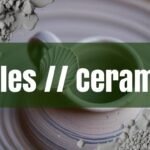For those of us who find joy in both pottery and gardening, combining the two can be incredibly rewarding. Crafting your own planters and bonsai pots allows for a personal touch in nurturing your green companions. Let’s explore the world of pottery for gardening, from drainage solutions to the best clay choices and some inspiring DIY tutorials. Learn about crafting planters.
One of the most critical aspects of using pottery for planters is ensuring proper drainage. Plants need well-draining soil to prevent root rot, which can occur when water accumulates at the bottom of the pot. A simple solution is to use pots with pre-drilled drainage holes. If you have a beautiful ceramic pot without holes, you can carefully drill them using a diamond-tipped drill bit. Another effective method is double potting: place your plant in a plastic or clay pot with drainage holes, then set it inside the decorative ceramic pot. This allows you to remove the inner pot for watering and ensures excess water drains away. This method works well. You can also add a layer of gravel, pebbles, or activated charcoal at the bottom of the pot to improve drainage and absorb excess moisture. This provides more aeration to the soil. The type of soil you use is also crucial; a lightweight potting mix with perlite, vermiculite, or sand enhances drainage. Finally, elevate your planter with pot feet or risers to prevent drainage holes from becoming blocked. Elevating your planter is key.
Bonsai pots, in particular, require careful consideration of materials and construction. Common materials include ceramic, plastic, wood, metal, and concrete. Ceramic pots, whether glazed or unglazed, are popular choices. Unglazed ceramic pots are porous, promoting excellent air exchange and moisture regulation, ideal for delicate deciduous species. This aeration is key for some species. Glazed ceramic pots retain moisture more effectively and offer a sleek aesthetic. For those who enjoy DIY projects, creating your own bonsai pot can be a rewarding experience. Concrete pots are durable and provide good breathability. You can mix Portland cement with sand, gravel, and water to create a stiff mixture, then shape it in a mold, ensuring you create drainage holes. Let the pot set overnight and cure for several days to achieve full strength. Concrete can be a cheap alternative.
When it comes to choosing the best clay for outdoor planters, several options stand out. Terracotta is a classic choice due to its porosity, which aids in drainage and air circulation, preventing root rot. Terracotta is a classic for a reason.
Stoneware clay, fired at higher temperatures, is denser and more durable, making it suitable for outdoor conditions. Porcelain is another excellent option; it’s non-porous and resistant to damage from freezing and thawing, though it can be more challenging to work with. Porcelain is very resistant to frost.
For those seeking a more modern solution, composite clay is a patented cement-based material that is lightweight, watertight, and durable, perfect for outdoor use. Composite clay can be the best of both worlds. Clay types are varied.
“Experiment with different clay types to find what works best for your plants and climate.”
If you’re eager to get your hands dirty, there are numerous DIY tutorials for creating pottery planters. Kate Chipinski’s vintage-style planters involve transforming existing pottery with matte black spray paint, spackle, and wet dirt for an aged look. For a more traditional approach, Ceramics Today demonstrates how to create a planter using the pinching technique with air-drying clay. The Spruce Crafts offers a beginner-friendly guide to making ceramic plant pots, while Craftsy provides a tutorial on sculpting a clay planter without a kiln, perfect for those without access to high-firing equipment.
- Vintage-Style Planters
- Pinching Technique Planter
- Beginner Ceramic Plant Pots
- Kiln-Free Clay Planters
Terracotta pots, in particular, offer several benefits for plant growth. Their porosity allows for proper ventilation, preventing waterlogging and promoting healthy root development. They are the classic for a reason. They also help regulate moisture levels, making them ideal for plants sensitive to overwatering, and act as natural insulators, protecting roots from extreme temperatures. Terracotta pots protect roots. Additionally, terracotta pots are eco-friendly and add a rustic charm to any space, developing a natural patina over time. Over time, they get a great rustic look. Whether you’re crafting intricate bonsai pots or simple terracotta planters, the combination of pottery and gardening offers a unique way to connect with nature and express your creativity.





